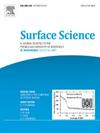Structure determination by low-energy electron diffraction—A roadmap to the future
IF 1.8
4区 化学
Q3 CHEMISTRY, PHYSICAL
引用次数: 0
Abstract
Of all experimental Surface Science techniques, LEED-IV surface crystallography delivers the most complete set of crystallographic data for the near-surface regions (down to Å below the surface) of ordered single crystal surfaces. In the last five decades a large number of surface structures have been determined but theoretical and experimental procedures need to be adopted to meet the requirements of new directions in Surface Science. In this perspective article approaches will be discussed for extracting structural information from disordered and rough surfaces, increasing the experimental data set for large unit cells with complex unit cells, improving the scattering potentials used to calculate LEED-IV curves, and expanding the pressure range of the technique.

低能电子衍射法测定结构——通往未来的路线图
在所有实验表面科学技术中,LEED-IV表面晶体学为有序单晶表面的近表面区域(低于表面以下≈10 Å)提供了最完整的晶体学数据集。在过去的五十年中,已经确定了大量的表面结构,但需要采用理论和实验方法来满足表面科学新方向的要求。从这个角度来看,文章将讨论从无序和粗糙表面提取结构信息的方法,增加具有复杂单元格的大单元格的实验数据集,改进用于计算LEED-IV曲线的散射势,以及扩大该技术的压力范围。
本文章由计算机程序翻译,如有差异,请以英文原文为准。
求助全文
约1分钟内获得全文
求助全文
来源期刊

Surface Science
化学-物理:凝聚态物理
CiteScore
3.30
自引率
5.30%
发文量
137
审稿时长
25 days
期刊介绍:
Surface Science is devoted to elucidating the fundamental aspects of chemistry and physics occurring at a wide range of surfaces and interfaces and to disseminating this knowledge fast. The journal welcomes a broad spectrum of topics, including but not limited to:
• model systems (e.g. in Ultra High Vacuum) under well-controlled reactive conditions
• nanoscale science and engineering, including manipulation of matter at the atomic/molecular scale and assembly phenomena
• reactivity of surfaces as related to various applied areas including heterogeneous catalysis, chemistry at electrified interfaces, and semiconductors functionalization
• phenomena at interfaces relevant to energy storage and conversion, and fuels production and utilization
• surface reactivity for environmental protection and pollution remediation
• interactions at surfaces of soft matter, including polymers and biomaterials.
Both experimental and theoretical work, including modeling, is within the scope of the journal. Work published in Surface Science reaches a wide readership, from chemistry and physics to biology and materials science and engineering, providing an excellent forum for cross-fertilization of ideas and broad dissemination of scientific discoveries.
 求助内容:
求助内容: 应助结果提醒方式:
应助结果提醒方式:


